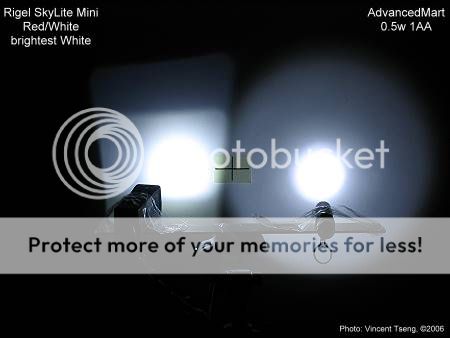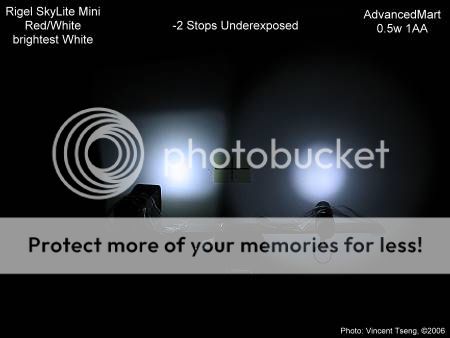rigelsys wrote:
"Green vs Red has been argued quite a bit in the Astro hobby. The gist is, visual acuity in red is pretty bad, to read one has to crank the red up to the point that it decreases dark adaptation. Visual acuity in the green is so much better, that the green can be used at much lower levels than red to read by and so green doesn't affect night vision as much. Our position is, that if you don't need to read fine print, then red is the best. If you need to read fine print in the dark, then green is better. "
Far be it from me to to even contemplate contradicting someone who is very experienced in use of light with astronomy.
I would very much agree that red causes problems in acucity for lots of people - including me.
I too would see better using a dim green.
BUT if we are talking about strictly preserving
Scotopic human night vision - which takes about half an hour to acquire in a totally dark environment (or wearing suitable
red goggles) - any light other than red that allows one to read will affect the very sensitive Rods used for Scotopic human night vision.
Sorry to seem pedantic about using the words "Scotopic human night vision" - but I want to be explicit about what we are talking about.
For what I call semi-dark conditioning - ie: just being about to see well in the dark - this takes only about 5-7 minutes in the dark - which uses the cones - mainly Photopic "daylight" vision, or the mixed Mesopic vision using both rods and cones - then almost
any colored light will do depending on personal taste - the dimmer the better - there is then VERY good argument for using green - as it is the wavelength that the human eye is most sensitive to - so in theory one needs th least amount of green to still see.
But - this is a personal take - I find green an unusual and somewhat UNcomfortable color to use and find a yellow or amber "better" - I know this is most likely conditioning and what we are used to, as most artificial lights are yellow biassed - so I understand if this only works for me.......and YMMV -
However from the
USAF Flight Surgeon's Guide Chapter 8 - which I take as authorative -
QUOTE:
"
Enhancing and Maintaining Dark Adaptation: For maximum utilization of scotopic vision, 20 to 30 minutes are required, in total darkness, to attain satisfactory dark-adaptation. A more practical alternative is to have the aircrew members wear red goggles to facilitate dark adaptation. Red goggles can be worn in normal illumination and do not interfere significantly with the ability to read maps, charts, manuals, etc. They block all light except red light, and red light does not simulate the rods, as we have seen.
To understand why red filters can be used to achieve dark adaptation, it is necessary to examine the relative positions of the photopic and scotopic sensitivity curves in Figure 8-20. If a red filter with a cutoff at about 650 nanometers is worn, essentially no light is transmitted to the eye that can stimulate the rods. However, the cones are sensitive to the red light, and, thus, adequate visual acuity is permitted. By wearing red goggles for 30 minutes, the rods are almost fully dark adapted. Although the cones are not dark adapted, it only takes about 5 to 7 minutes, after a pilot steps into the dark, for the cones to adapt. Cone adaptation is relatively unimportant, since they are incapable of functioning in starlight illumination. There are, however, some drawbacks to wearing red goggles. For example, when reading maps, all markings in red ink on a white background may be invisible. In addition, red light creates or worsens near point blur in the pre-presbyopic or presbyopic pilot, as red light comes to a focus behind the retina and requires more accommodation to bring it into focus.
Dark adaptation of the rods develops rather slowly over a period of 20 to 30 minutes, but it can be lost in a second or two upon exposure to bright lights. The night flyer must, therefore, be taught to avoid bright lights. Also, the instrument panel must be kept illuminated at the lowest level consistent with safe operation, and the flyer must avoid looking at flares, after-burner flames, or gun flashes. If light must be used, it should be as dim as possible and used for the shortest possible period.
Dark adaptation is an independent process in each eye. Even though a bright light may shine in one eye, the other will retain its dark adaptation, if it is protected from the light. This is a useful bit of information, because a flyer can preserve dark adaptation in one eye by simply closing it.
Cockpit Illumination: The use of red light (wavelength greater than 650 nanometers) for illumination of the cockpit is desirable, because it, like red goggles, does not affect dark adaptation. Red cockpit lighting has been traditional since World War II. The intent was to maintain the greatest rod sensitivity possible, while still providing some illumination for central foveal vision. However, red cockpit lighting did create some near vision problems for the pre-presbyopic and presbyopic aviators. With the increased use of electronic and electro-optical devices for navigation, target detection, and night vision, the importance of the pilot's visual efficiency within the cockpit has increased and new problems have been created. Low intensity, white cockpit lighting is presently used to solve those problems. It affords a more natural visual environment within the aircraft, without degrading the color of objects. Blue-green cockpit lighting is used in aircraft in which night-vision devices are used because, unlike the human eye, these devices are not sensitive to light at that end of the visual spectrum. In addition, blue-green light is the easiest for accommodative focus and is seen by the rods more readily than any other color. It is not seen as blue-green, however, but only as light. However, the enemy can easily see a blue-green light, under scotopic conditions, in any position of his peripheral field, whereas a low intensity red light would be invisible unless viewed directly. "
Thanks for the input and discussion.





